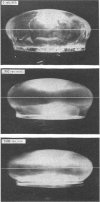Abstract
1. When the lens is spun around its antero-posterior polar axis in an apparatus designed for the purpose, high speed photography can be used to record its changing profile. By this method a variable radial centrifugal force can be applied to the lens which mimics the pull of the zonule.
2. If the lens is not stressed at its centre beyond 100 Nm-2 it behaves as a truly elastic body. When stressed beyond this limit visco-elastic strain is produced at its poles.
3. The human lens has isotropic elastic properties at the extremes of life, but at the other times Young's Modulus of Elasticity varies with the direction in which it is measured.
4. Young's Modulus of Elasticity of the lens varies with age, polar elasticity and equatorial elasticity, at birth being 0·75 × 103 and 0·85 × 103 Nm-2 respectively, while at 63 years of age both are equal to 3 × 103 Nm-2.
5. A comparison of Young's Modulus of the young human lens with that of the rabbit and cat shows that the polar elasticity of the lenses of these animals was 5 times greater in the young rabbit, and 21 times greater in the adult cat. Equatorial elasticities of the rabbit and human lens were equal, while in the cat the equatorial elasticity was four times greater.
6. A mathematical model showing the lens substance possessing a nucleus of lower isotropic elasticity than that of the isotropic elastic cortex surrounding it, accounts for the difference between polar and equatorial elasticity of the intact adult lens.
7. The implications of these findings are discussed in relation to:
(i) accommodation and the rheological properties of the lens;
(ii) possible differences in the physical state of the lenticular proteins in the cortex and nucleus which may account for the senile variations in Young's Modulus of Elasticity in these regions of the lens;
(iii) the loss of accommodation due solely to an increase in Young's Modulus of Elasticity of the lens between the ages of 15 and 60. This would amount to 44% of the total observed in vivo.
Full text
PDF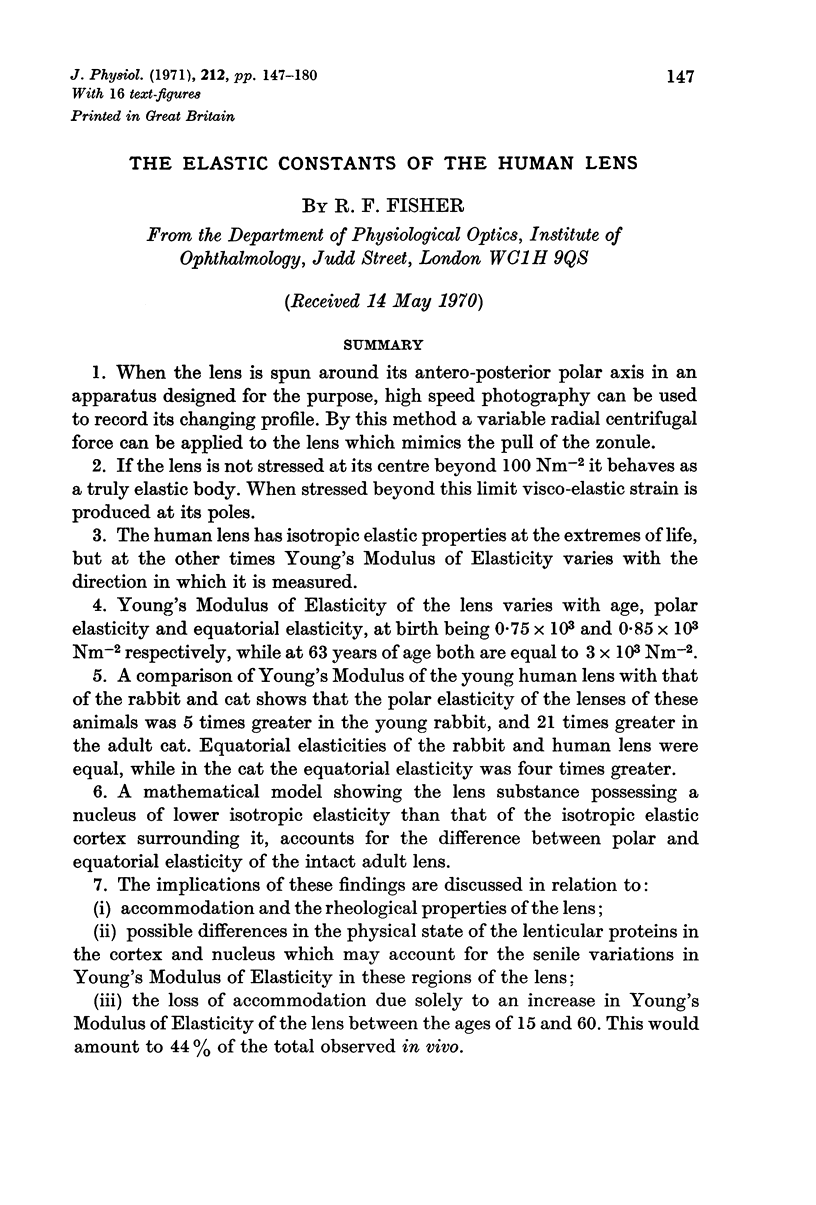
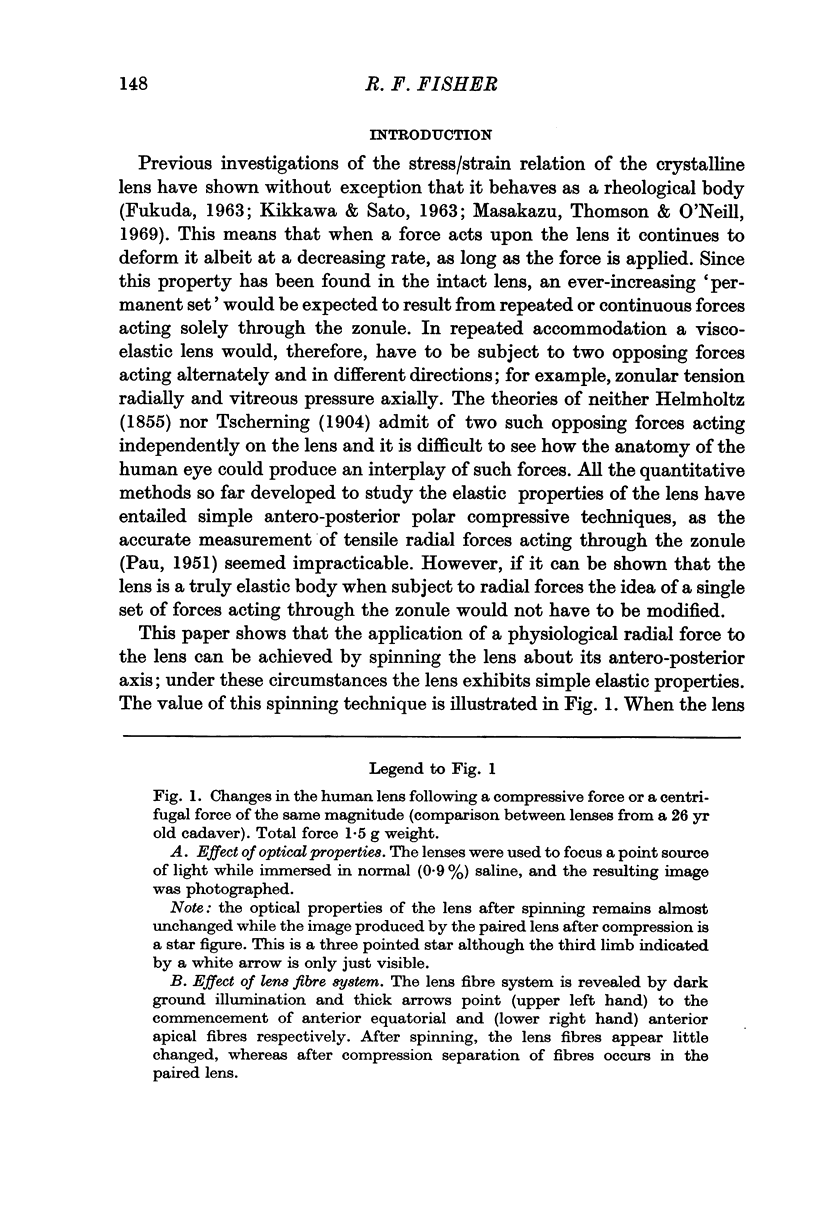
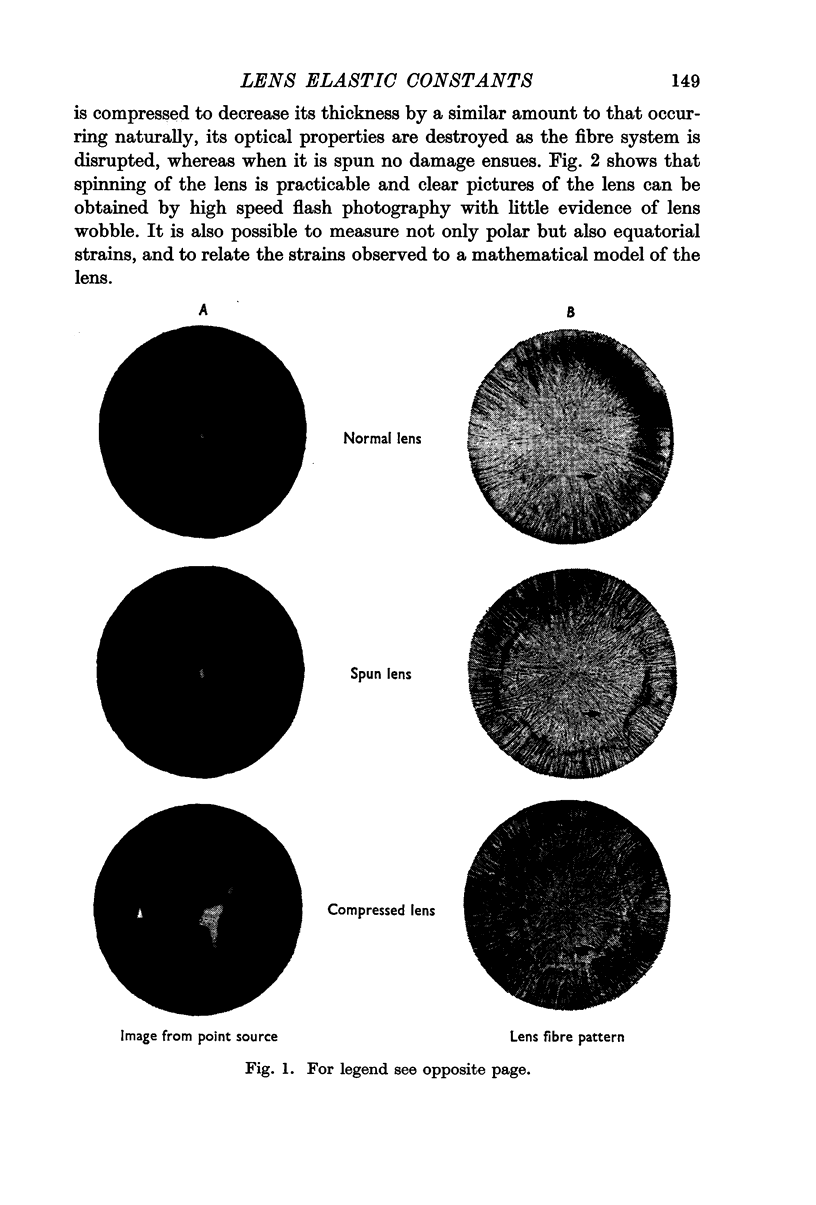
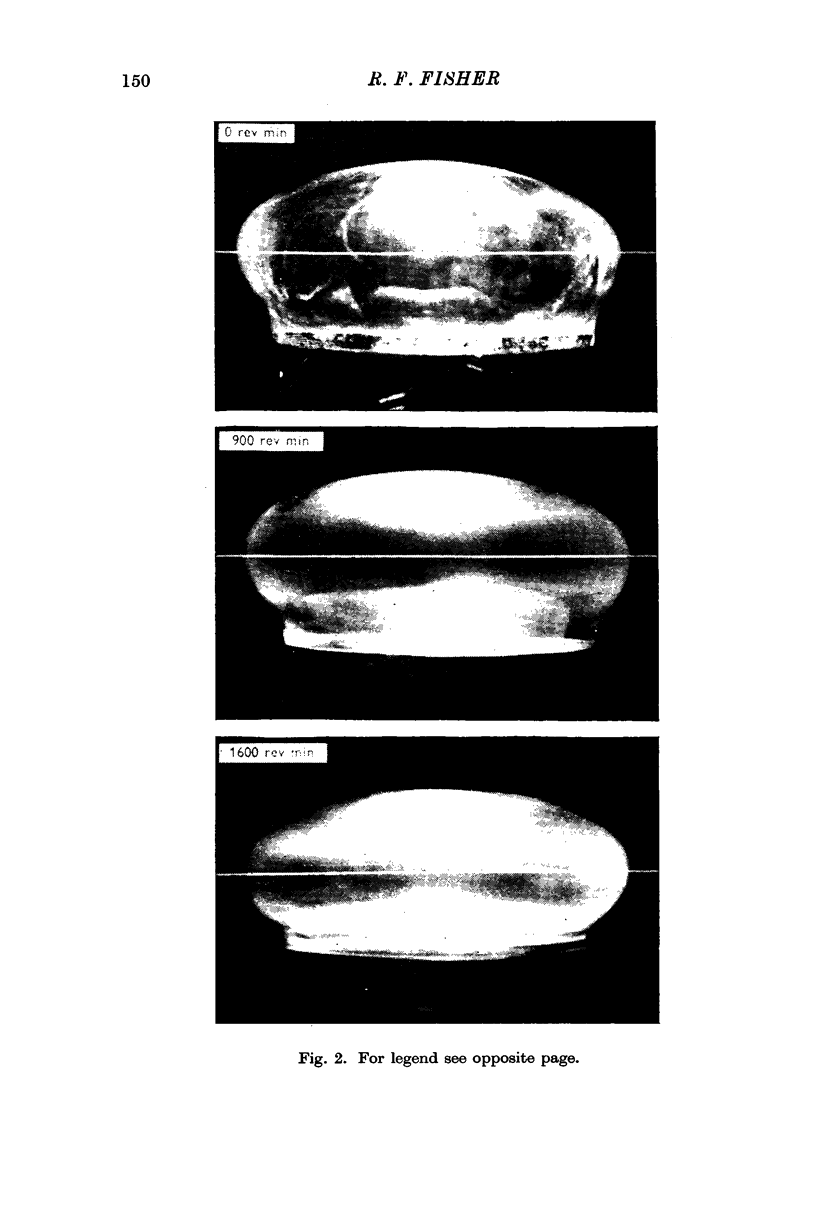
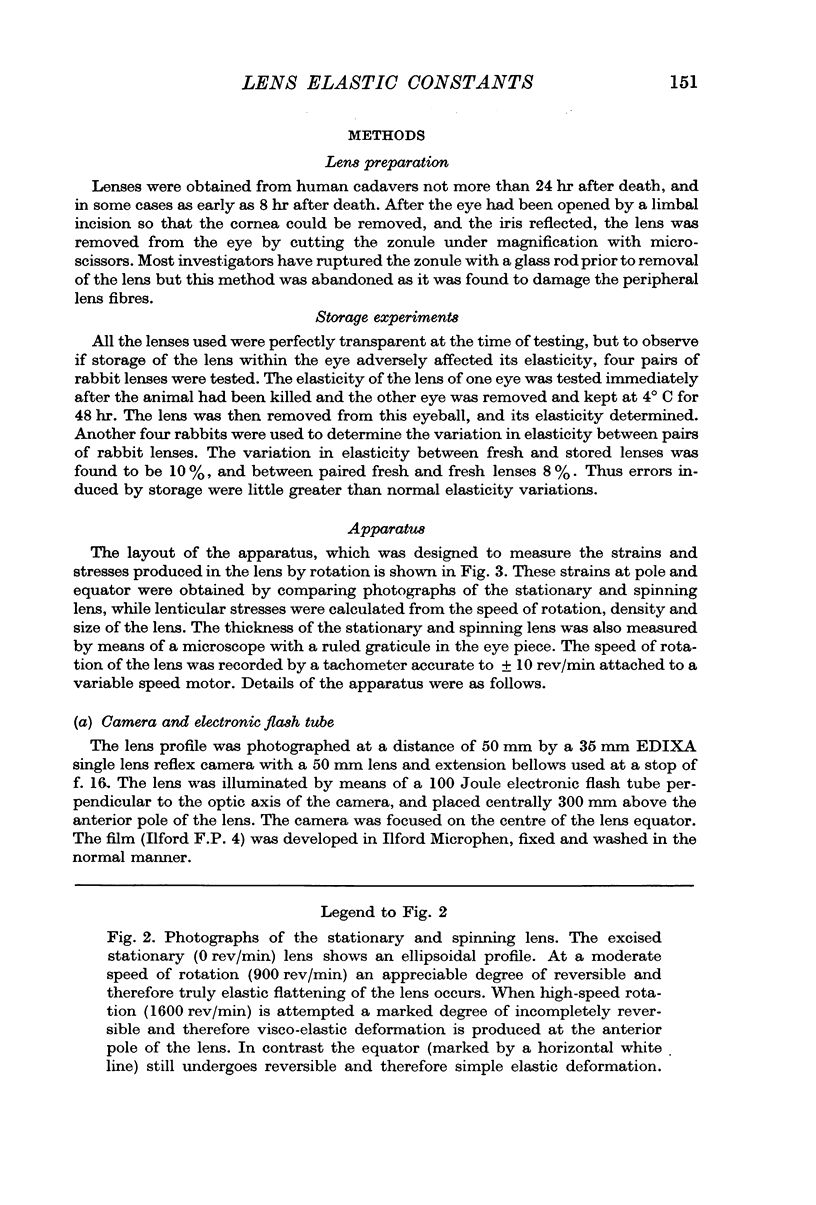

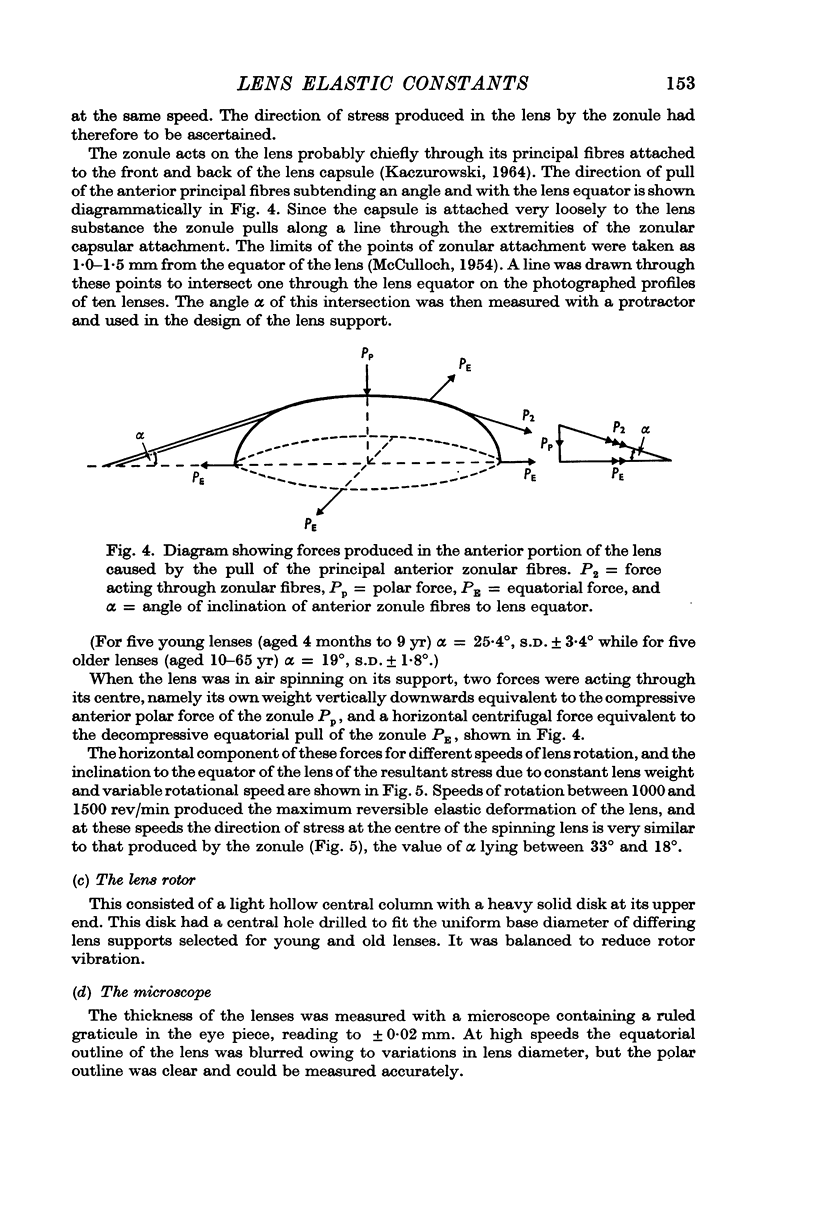
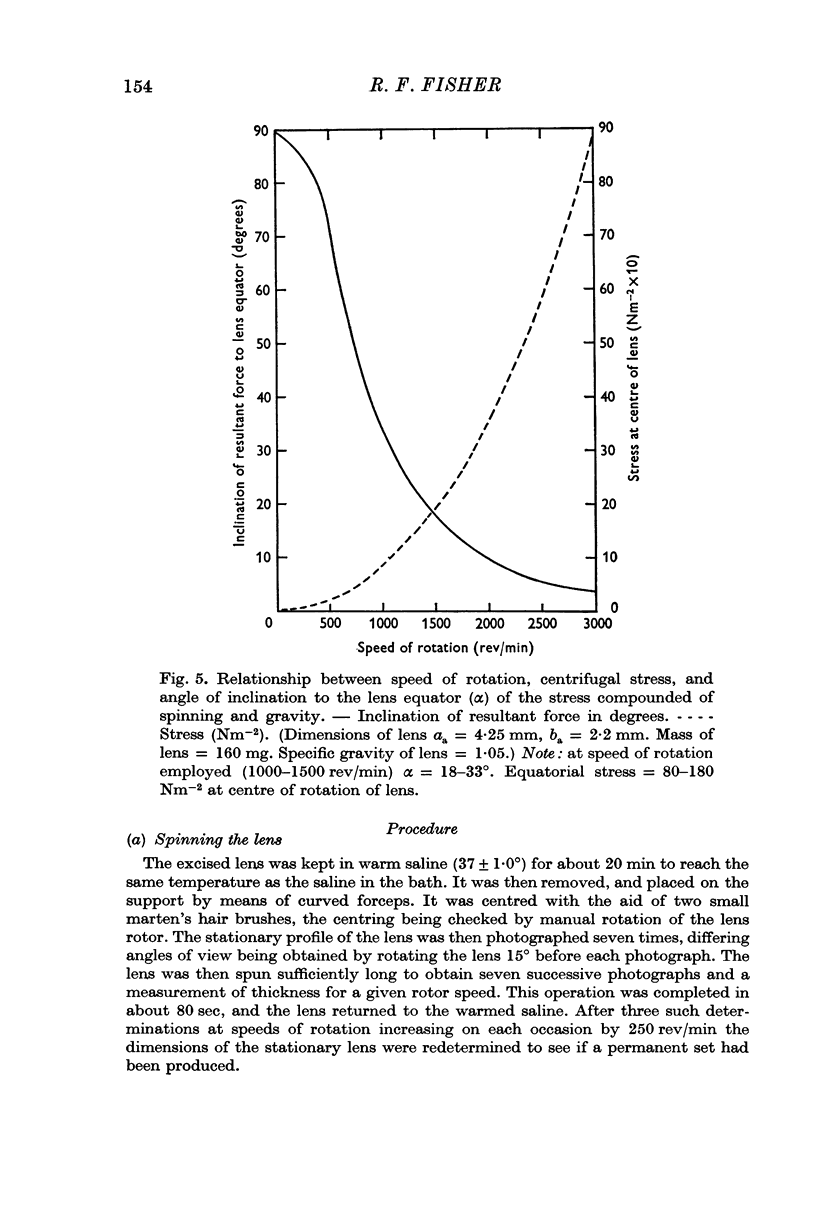
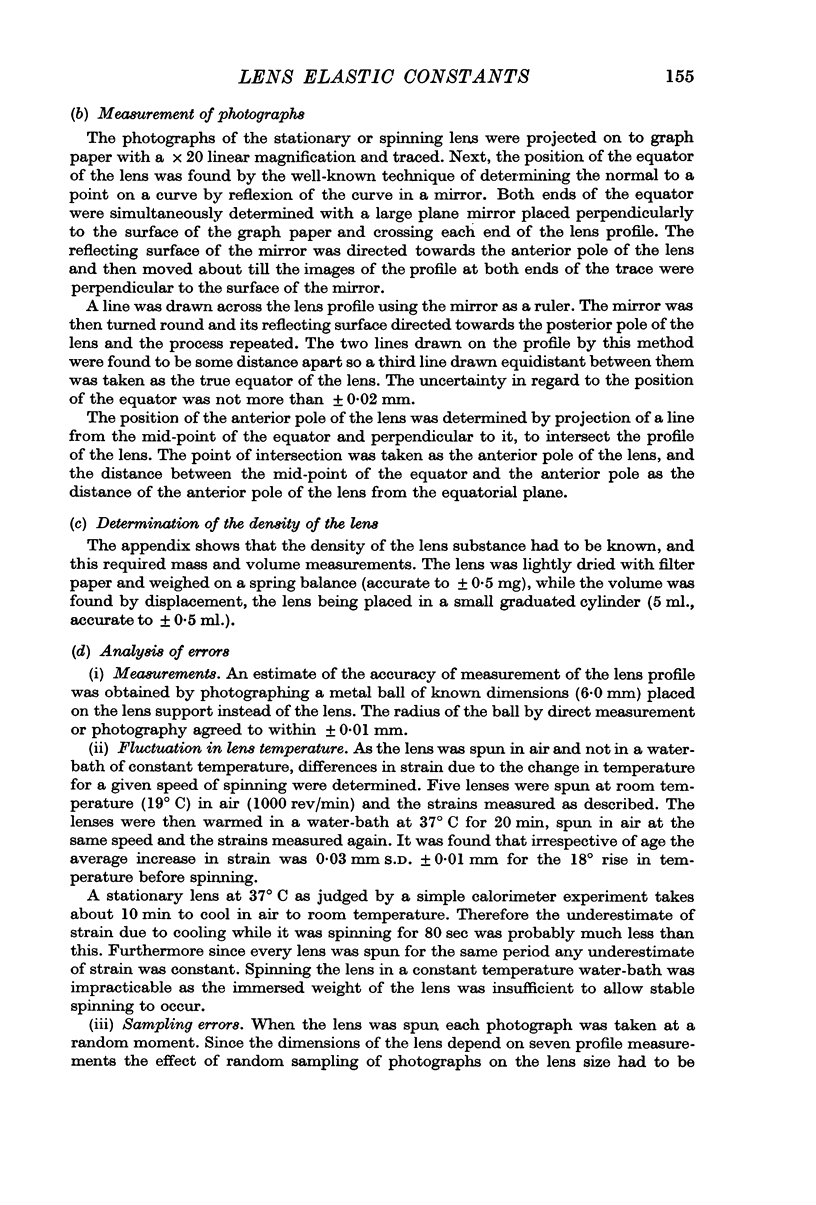


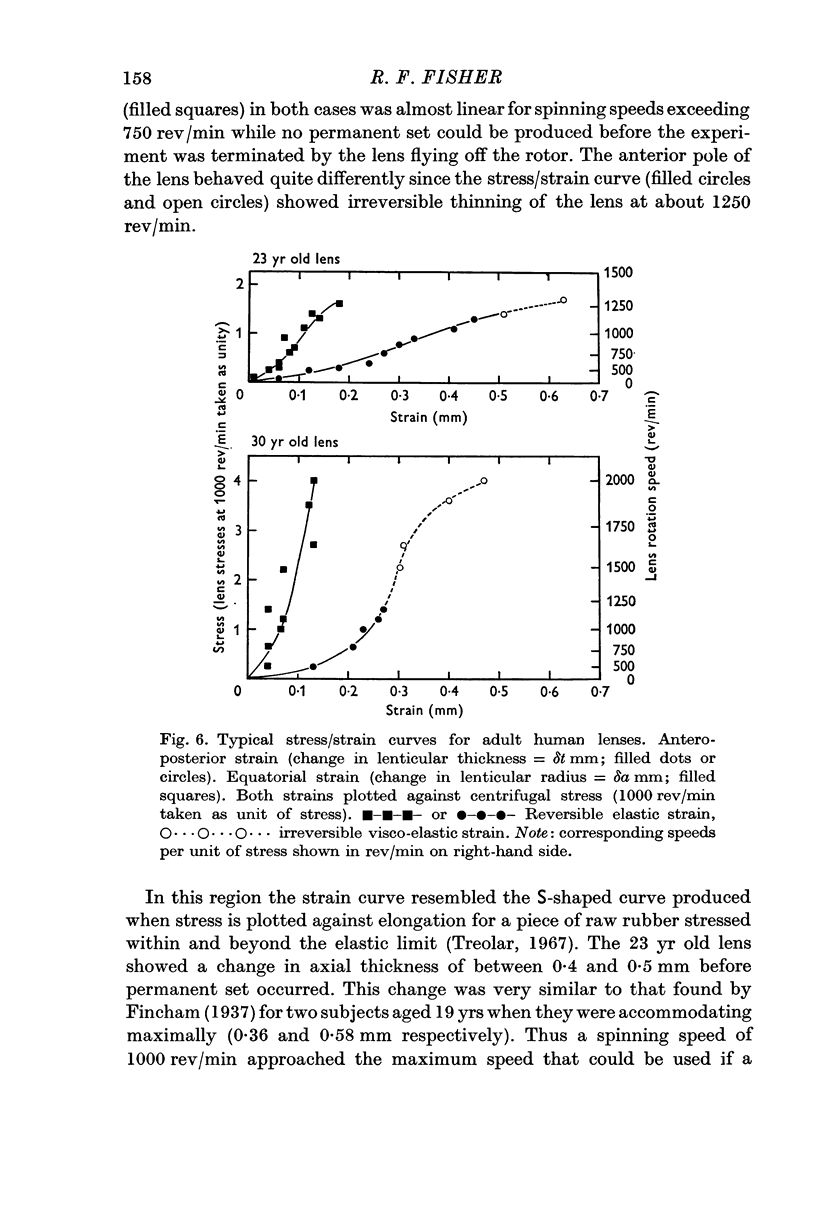

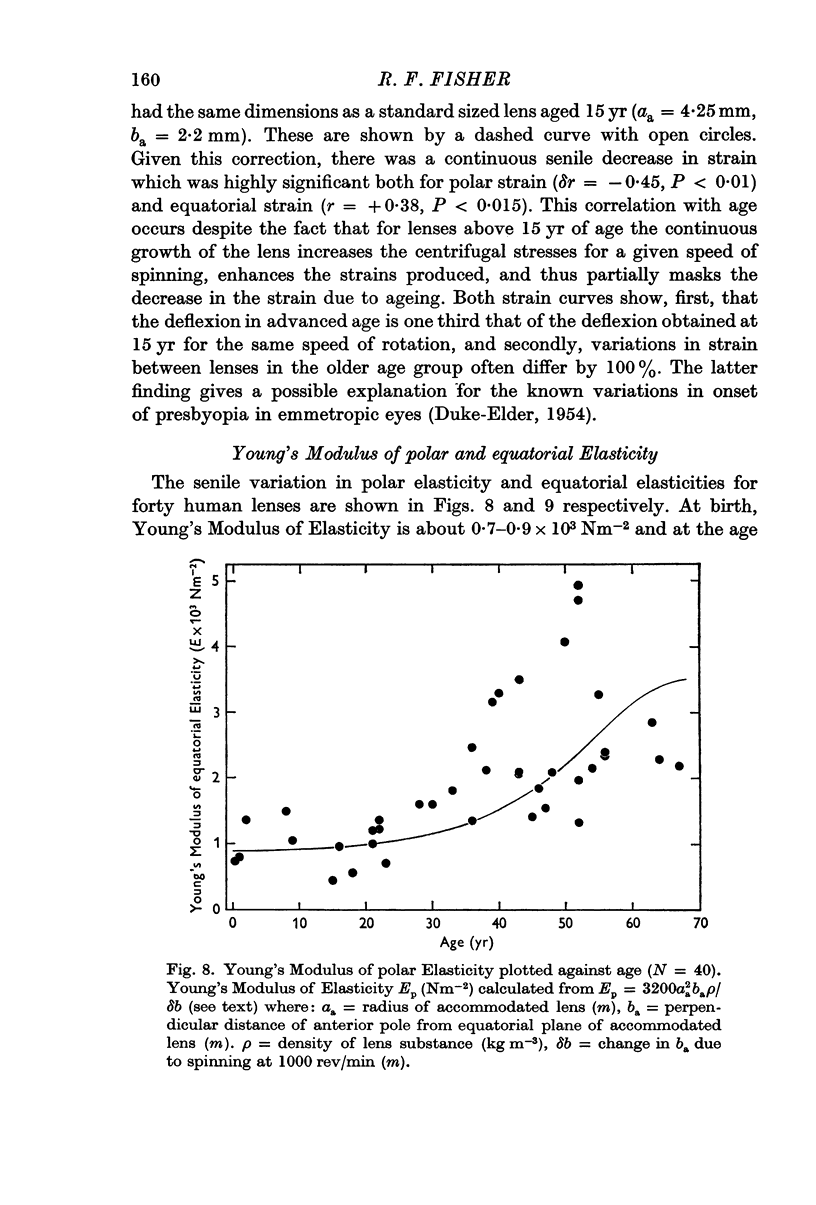

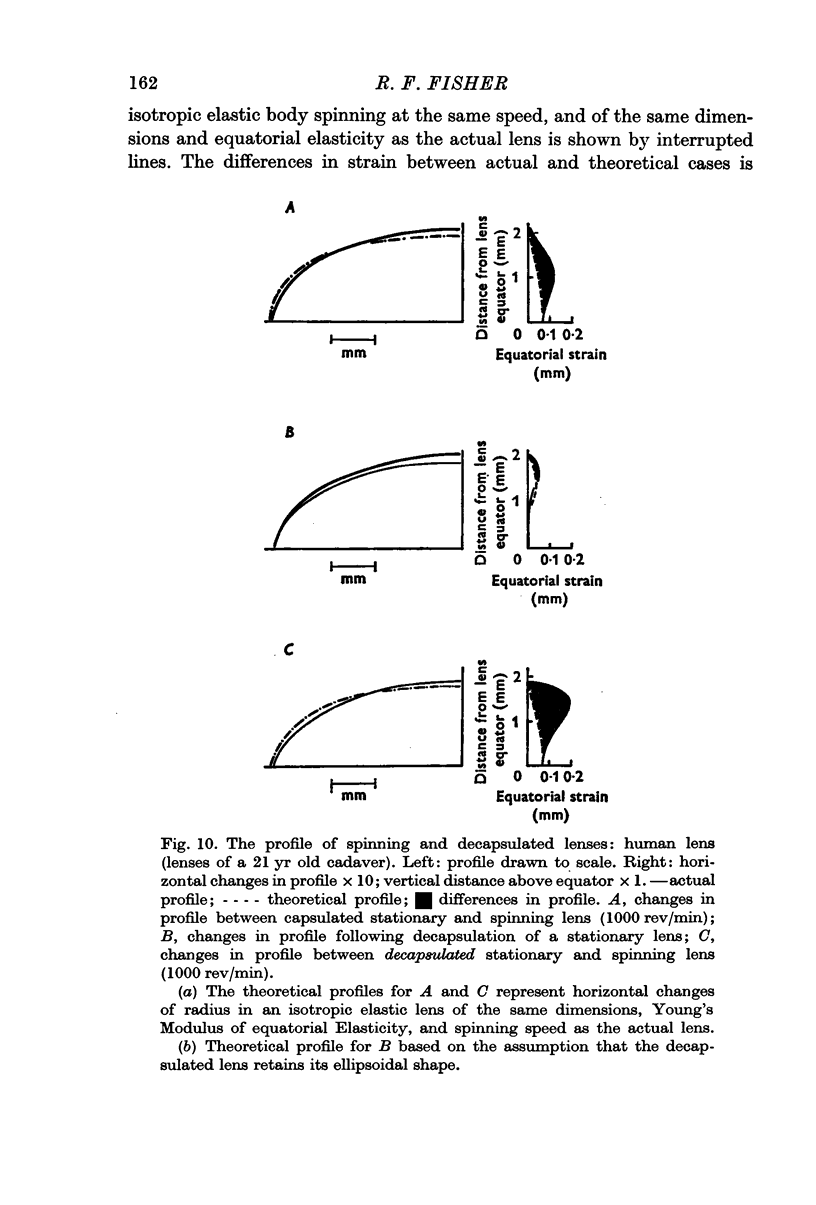
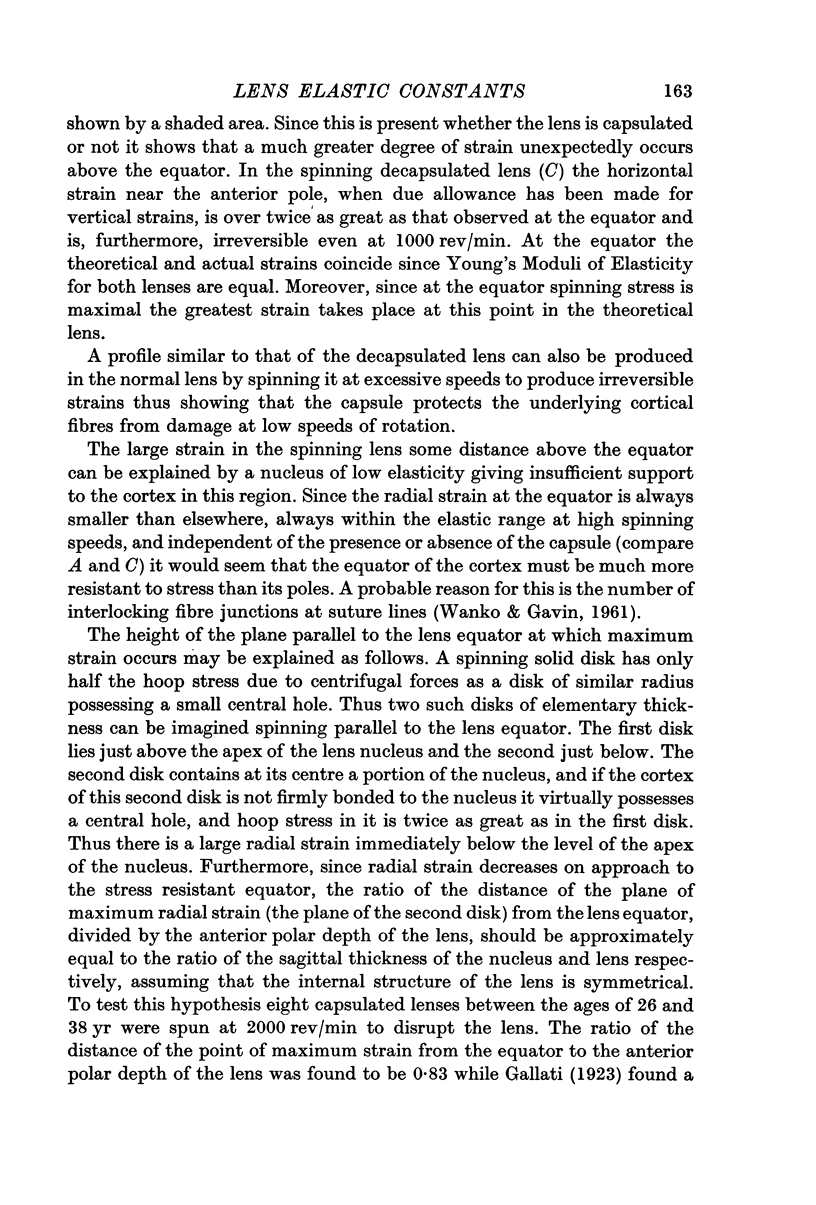
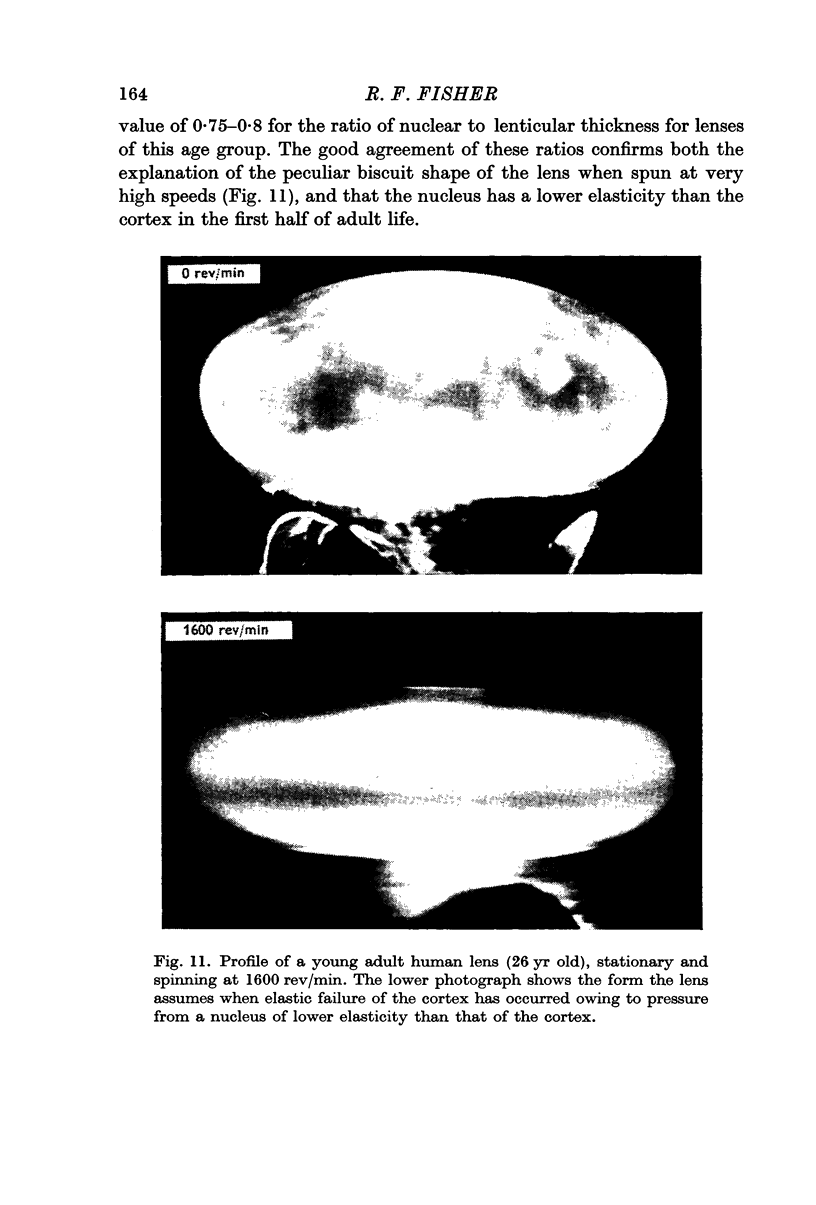
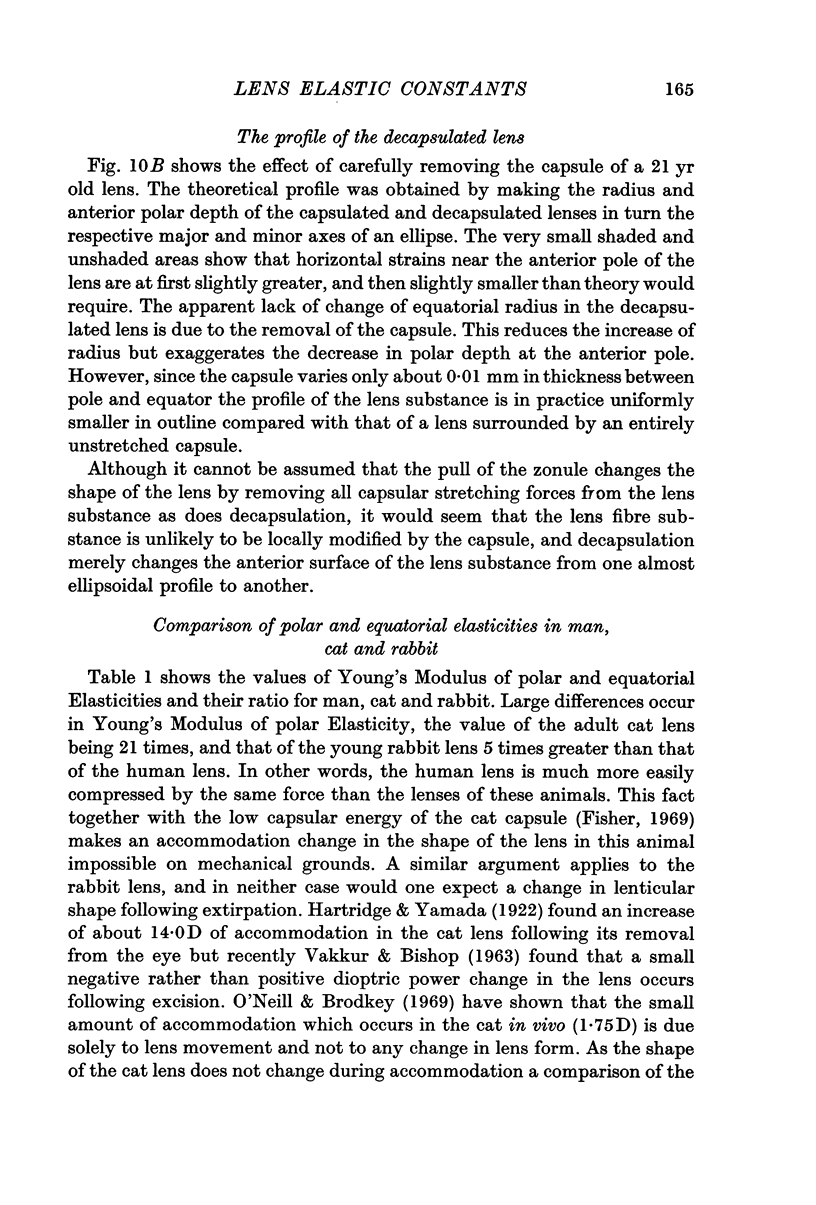
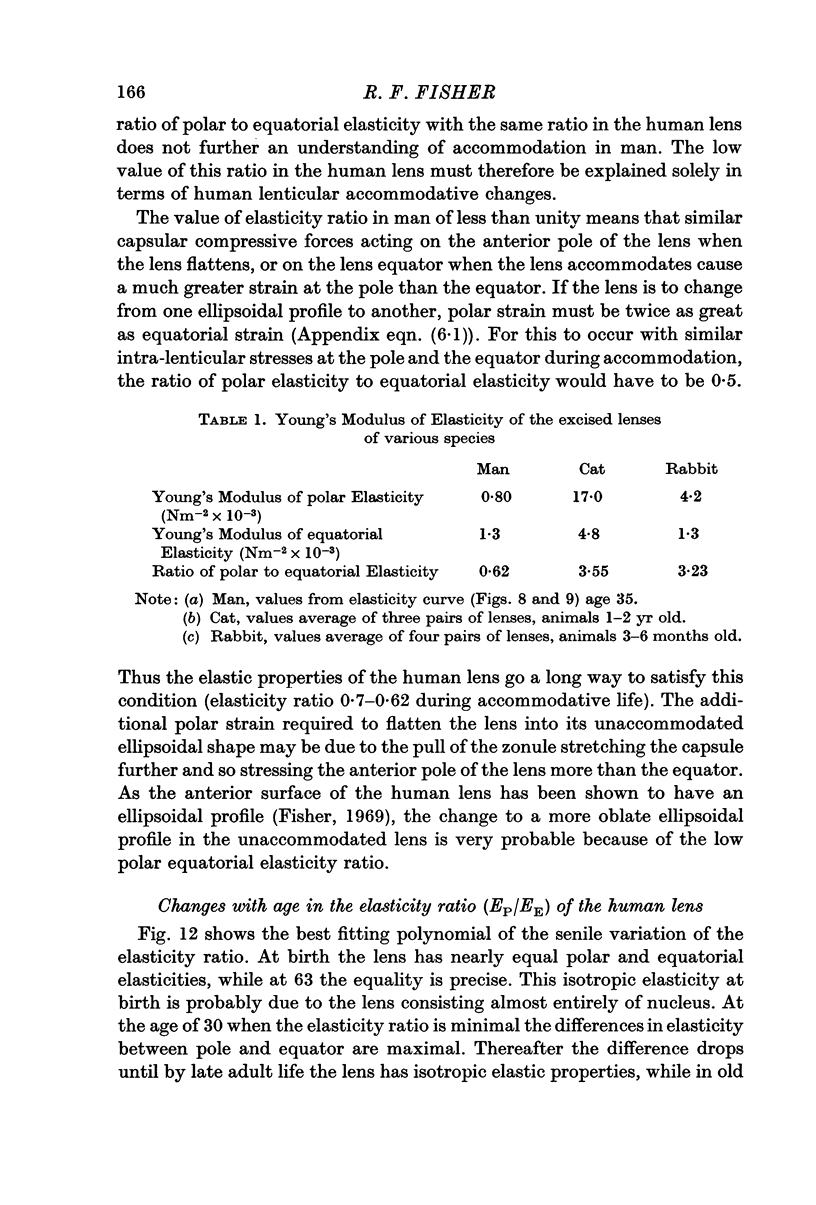

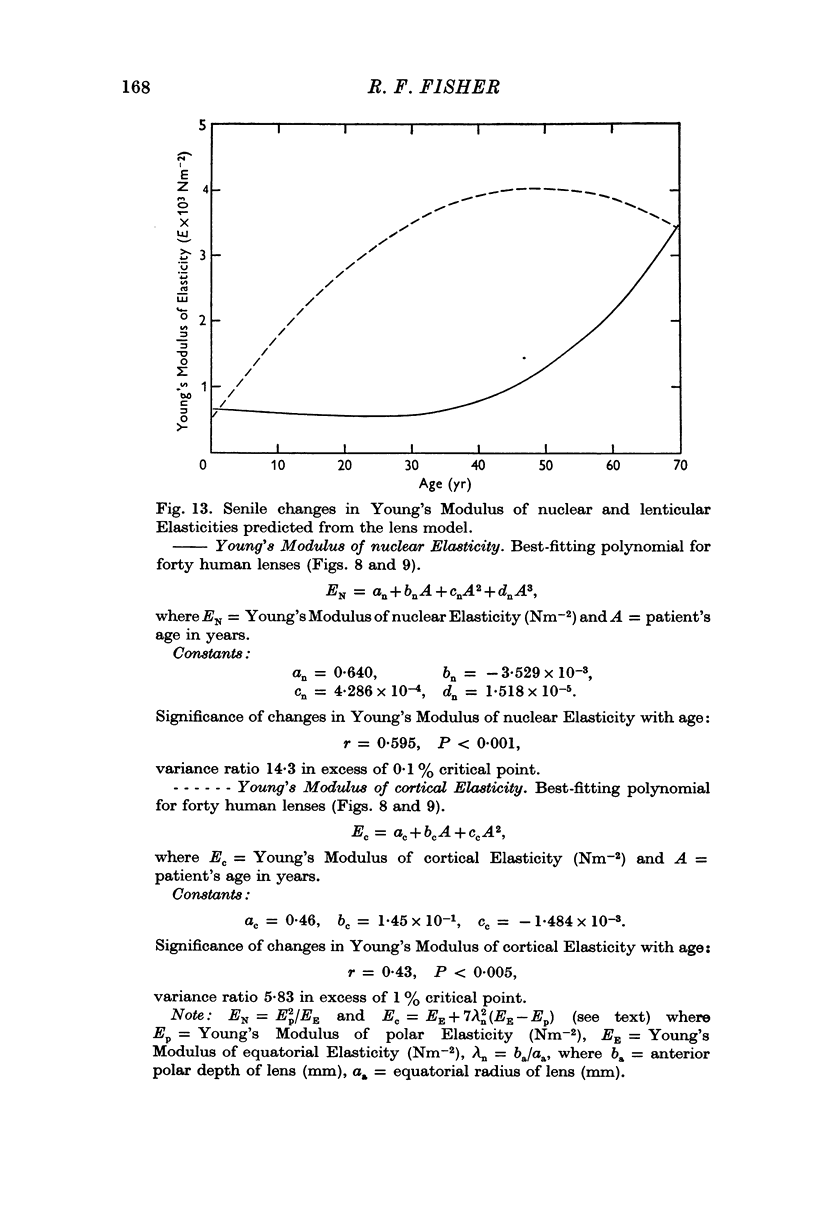
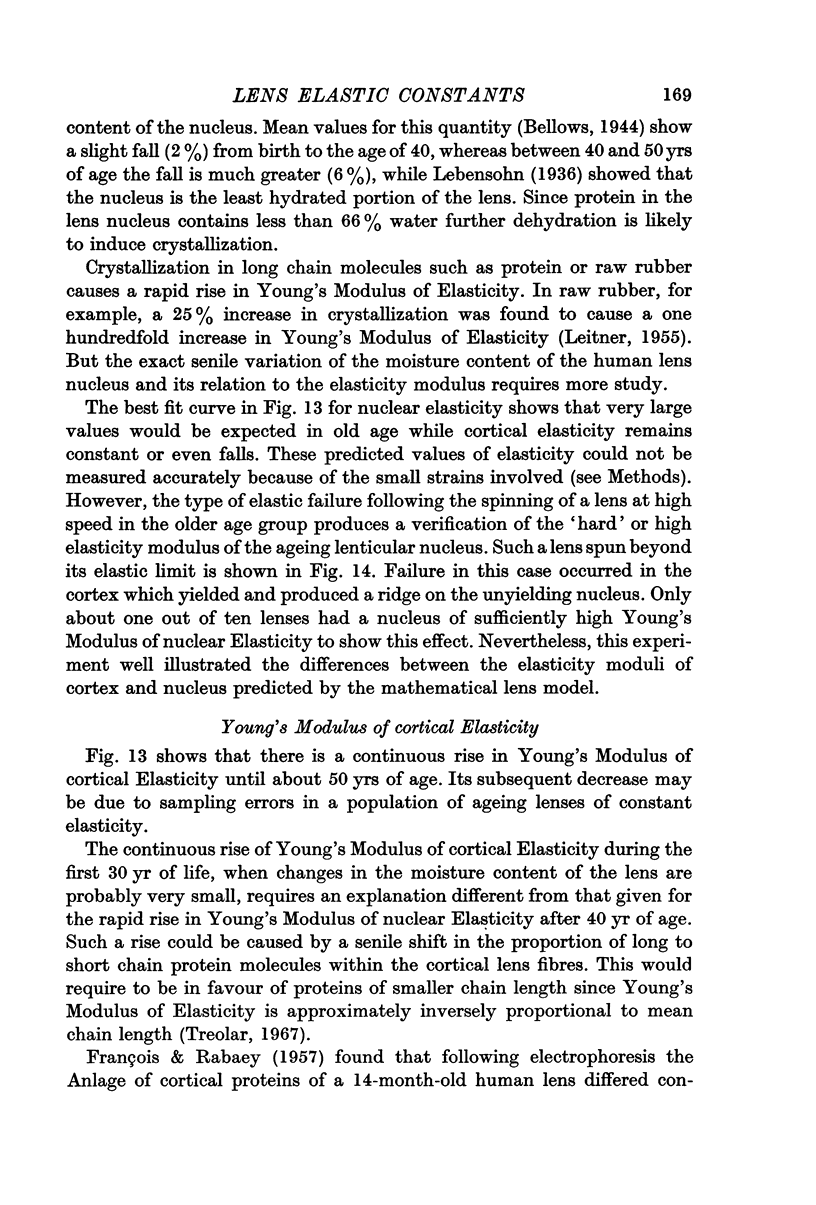


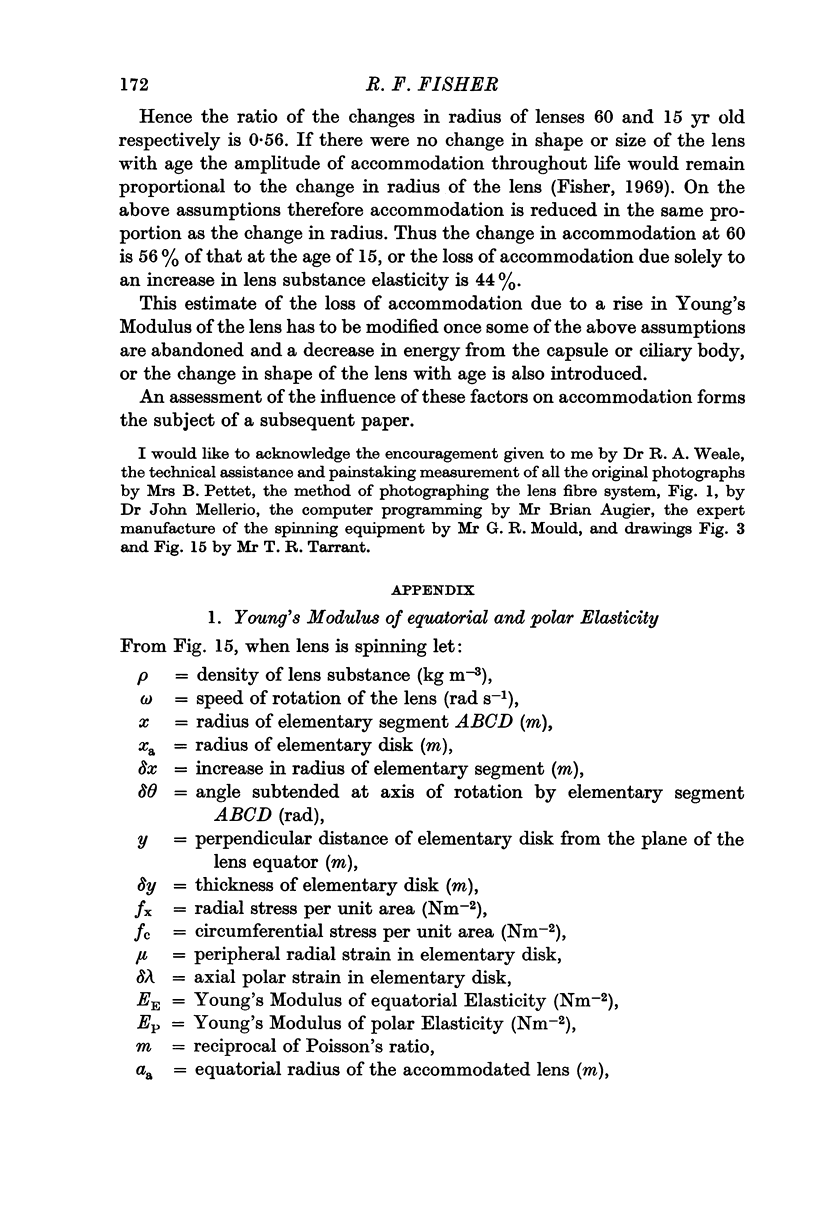
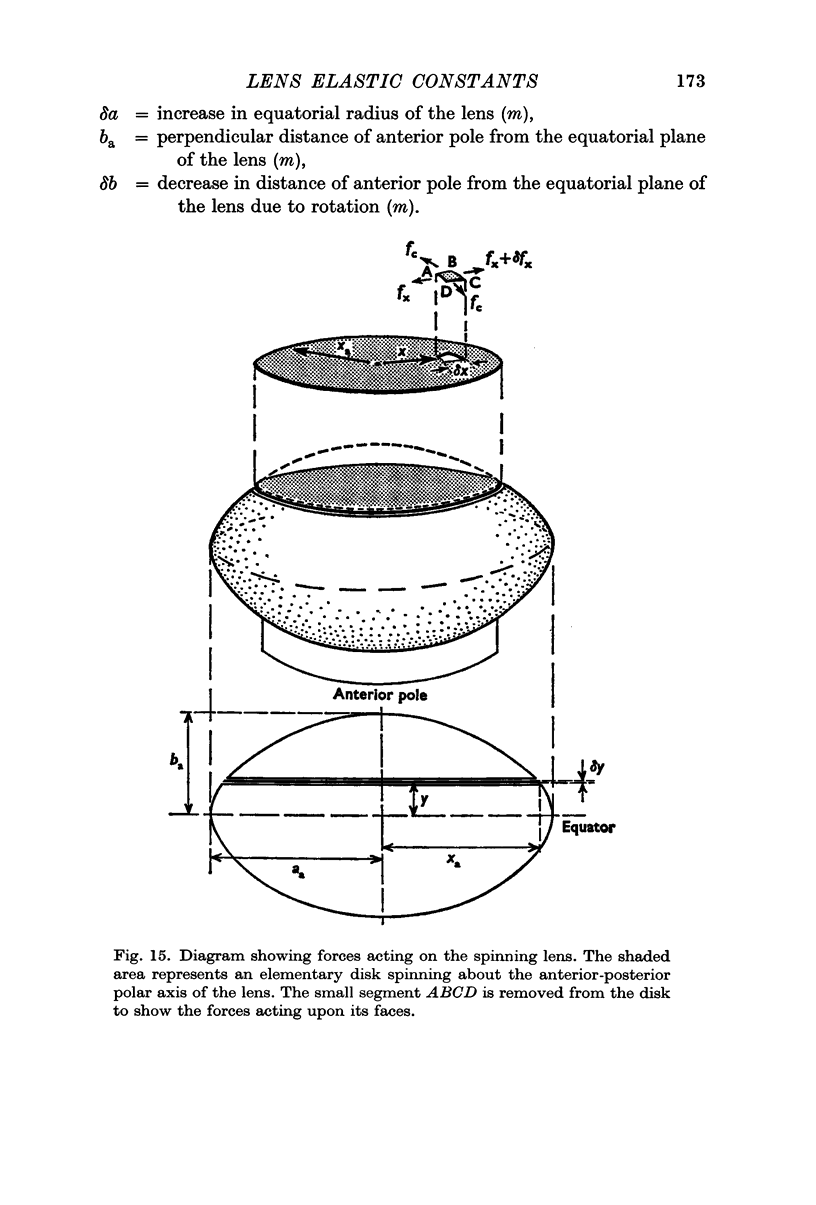
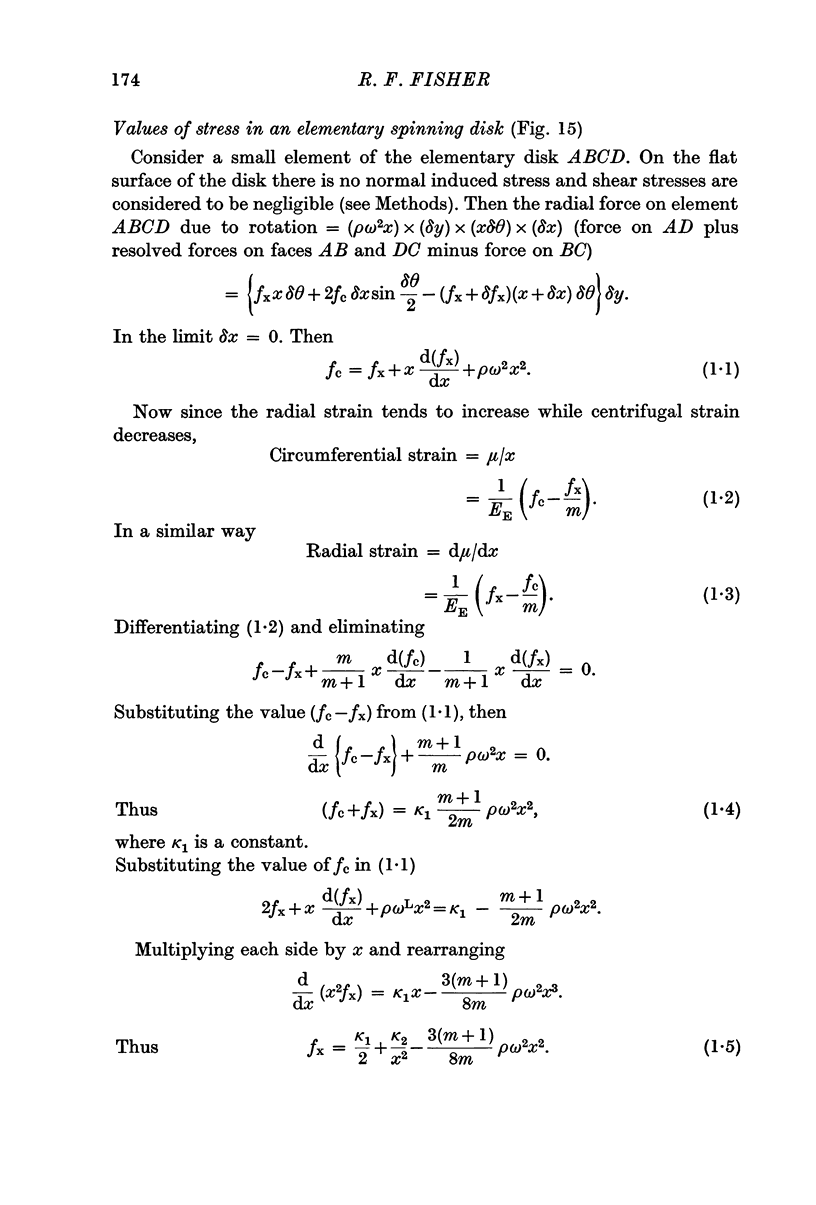
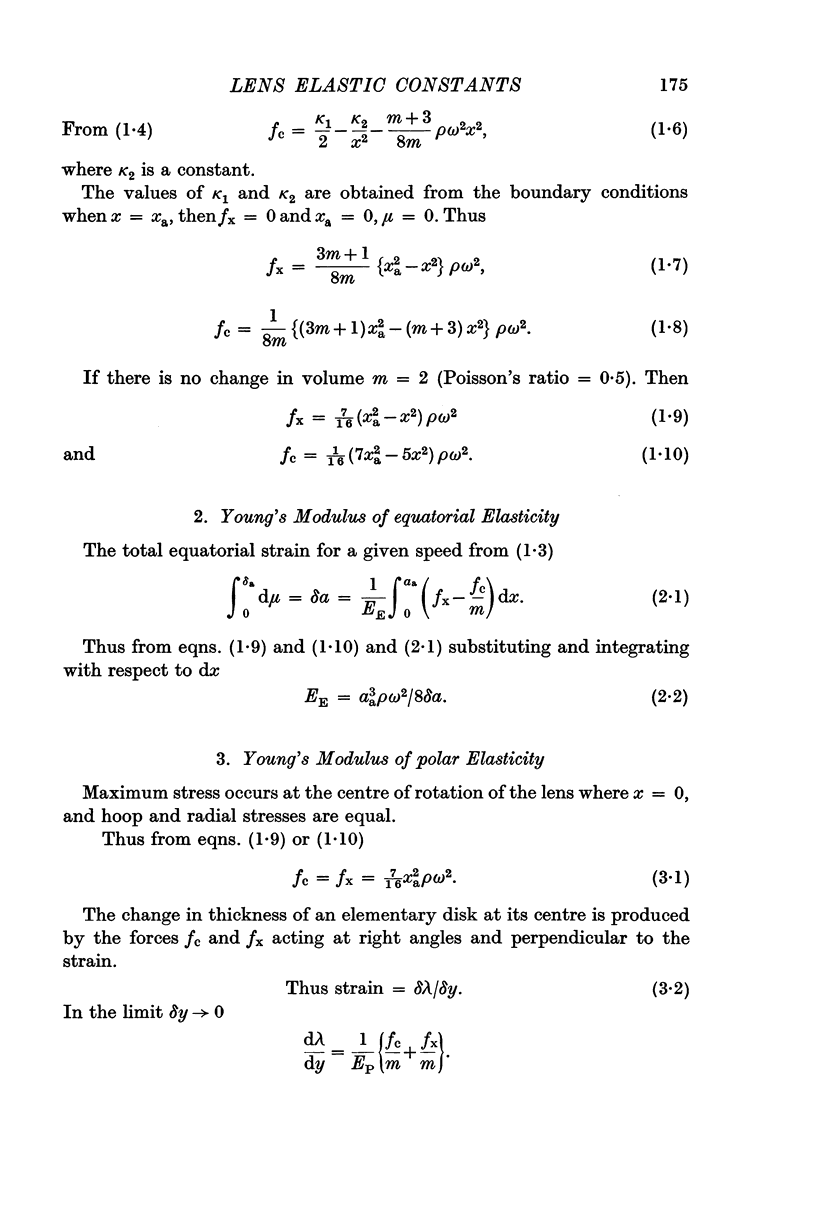



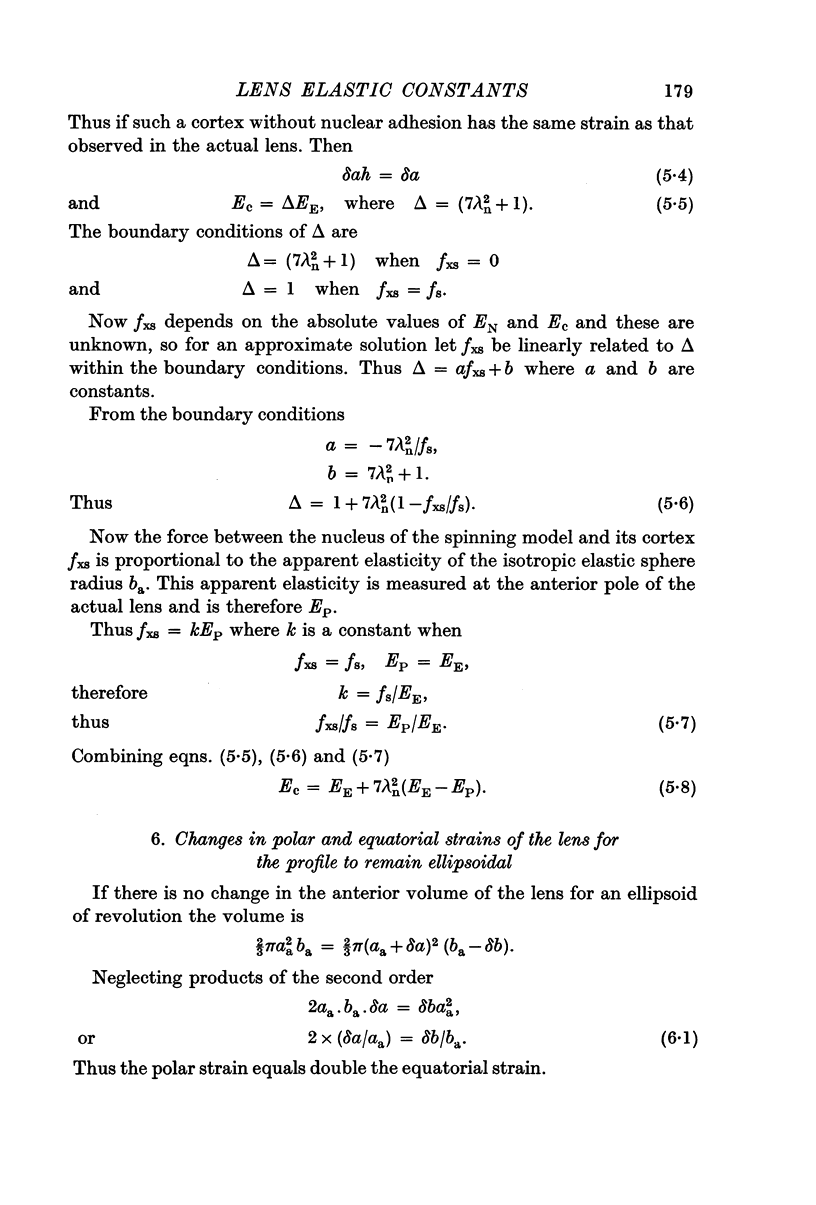
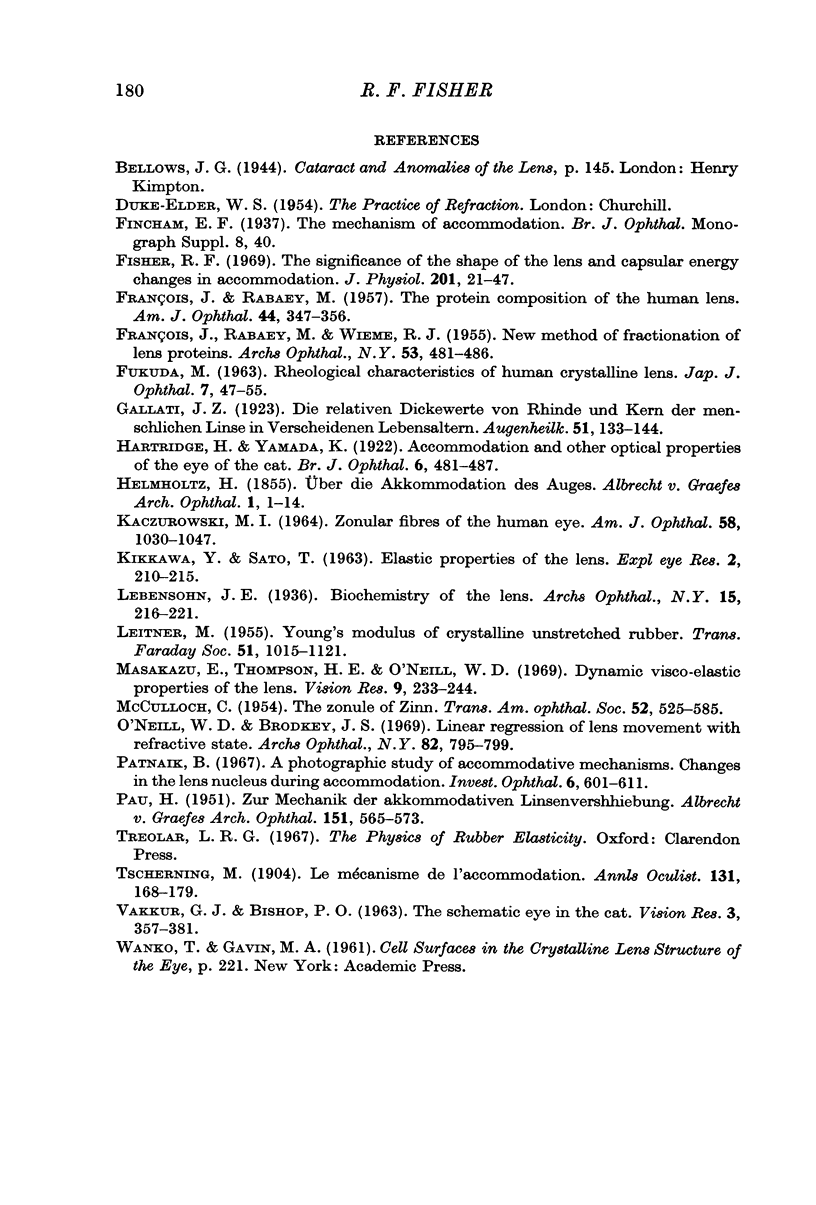
Images in this article
Selected References
These references are in PubMed. This may not be the complete list of references from this article.
- Ejiri M., Thompson H. E., O'Neill W. D. Dynamic visco-elastic properties of the lens. Vision Res. 1969 Feb;9(2):233–244. doi: 10.1016/0042-6989(69)90003-0. [DOI] [PubMed] [Google Scholar]
- FRANCOIS J., RABAEY M. The protein composition of the human lens. Am J Ophthalmol. 1957 Nov;44(5 Pt 2):347–357. doi: 10.1016/0002-9394(57)93131-8. [DOI] [PubMed] [Google Scholar]
- FRANCOIS J., RABAEY M., WIEME R. J. New method for fractionation of lens proteins. AMA Arch Ophthalmol. 1954 Apr;53(4):481–486. doi: 10.1001/archopht.1955.00930010483004. [DOI] [PubMed] [Google Scholar]
- Fisher R. F. The significance of the shape of the lens and capsular energy changes in accommodation. J Physiol. 1969 Mar;201(1):21–47. doi: 10.1113/jphysiol.1969.sp008740. [DOI] [PMC free article] [PubMed] [Google Scholar]
- Hartridge H., Yamada K. ACCOMMODATION AND OTHER OPTICAL PROPERTIES OF THE EYE OF THE CAT. Br J Ophthalmol. 1922 Nov;6(11):481–492. doi: 10.1136/bjo.6.11.481. [DOI] [PMC free article] [PubMed] [Google Scholar]
- KACZUROWSKI M. I. ZONULAR FIBERS OF THE HUMAN EYE. Am J Ophthalmol. 1964 Dec;58:1030–1047. doi: 10.1016/0002-9394(64)90017-0. [DOI] [PubMed] [Google Scholar]
- KIKKAWA Y., SATO T. Elastic properties of the lens. Exp Eye Res. 1963 Apr;2:210–215. doi: 10.1016/s0014-4835(63)80015-9. [DOI] [PubMed] [Google Scholar]
- MCCULLOCH C. The zonule of Zinn: its origin, course, and insertion, and its relation to neighboring structures. Trans Am Ophthalmol Soc. 1954;52:525–585. [PMC free article] [PubMed] [Google Scholar]
- O'Neill W. D., Brodkey J. S. Linear regression of lens movement with refractive state using ciliary ganglion stimulation in the cat. Arch Ophthalmol. 1969 Dec;82(6):795–799. doi: 10.1001/archopht.1969.00990020787014. [DOI] [PubMed] [Google Scholar]
- Patnaik B. A photographic study of accommodative mechanisms: changes in the lens nucleus during accommodation. Invest Ophthalmol. 1967 Dec;6(6):601–611. [PubMed] [Google Scholar]
- VAKKUR G. J., BISHOP P. O. THE SCHEMATIC EYE IN THE CAT. Vision Res. 1963 Nov;61:357–381. doi: 10.1016/0042-6989(63)90009-9. [DOI] [PubMed] [Google Scholar]




